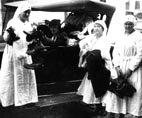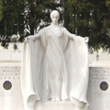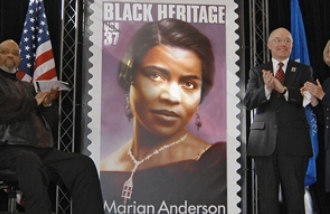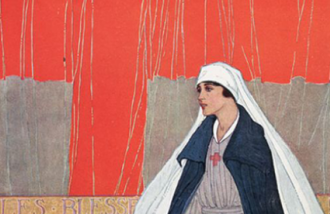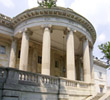Do you have an ancestor who lived on Long Island during the American Revolution? Help us prove that he or she has eligible last-known service in order to qualify as a Patriot for membership in the DAR.
Proving patriotic service of residents of Long Island and New York City during the war has always been difficult, due to the British occupation which began in September 1776 and lasted until the British evacuation in November 1783.
Most male residents in these areas took an oath to the crown between 1776 and 1779, as British commanders saw such oaths as a way to suppress activity against British control and maintain peace. While there may be various circumstances to explain why a particular male resident took the oath, his personal allegiances cannot justifiably be proven without contemporary evidence from that time. All persons on Long Island and in New York City (and in fact, all Patriots established by the DAR) are treated on a “last known act” basis, in which the last known act determines whether the individual is a Patriot or a Loyalist. Thus, it is important that any applicants review multiple sources to ensure that their ancestor did not take an oath to the King, or furnish aid to the British in any fashion AFTER performing his or her patriotic service.
It is also important to note that any civil service (serving as town officials, jurors, etc.) during the British occupation does not qualify as Revolutionary service. Thus in case of civil service, the applicant would need to ascertain whether the town in question was under British or American control at the time that the service was rendered.
The following is a typical process to approach a Long Island ancestor, particularly the Patriots that have not been reviewed in recent years:
- Did your ancestor reside on Long Island for the entirety of the war? Some residents did flee and take residence elsewhere; many of these residents who fled may be eligible for patriotic service as “refugees.” Review sources such as Mather’s Refugees of 1776 from Long Island to Connecticut for information on the refugees.
- If your ancestor remained on Long Island for the duration of the war, did he take the oath of allegiance to the King? For Suffolk County, these names appear on Tryon’s List, which was compiled and submitted in November 1778. In Queens County, Staten Island/Richmond County, and New York City & New York County, these oaths were administered in October 1776, and in Kings County, the list was taken in 1777.
-
If the answer to the above is yes, then a search must be undertaken to prove patriotic service after the date of the oath.
- Review sources such as Kenneth Scott’s Excerpts From A Loyalist Press and Henry Onderdonk’s Revolutionary Incidents… (multiple books exist in this series covering Queens, Kings, and Suffolk counties) for possible patriotic service and activities between 1776 and 1783.
-
If the answer to the above is no, then a search should still be conducted to ensure the ancestor did not take part in any subsequent Loyalist actions.
- The books by Scott and Onderdonk listed above also contain many Loyalist references and are useful for this purpose as well. (You may also wish to look into George Clinton’s papers referenced in the list of resources.).
- From the perspective of DAR, if the individual in question did not take any oaths to the Crown, did not participate in any Loyalist activity or provide support to the British cause during the British occupation, and can be credited with patriotic service, that ancestor shall be credited with said service. Alternately, if the individual in question did take an oath to the King, did participate in Loyalist activity or provide support to the British cause during the occupation, but can be credited with patriotic service AFTER these Loyalist actions, that ancestor shall also be credited with said service.
Exceptions to the Above:
-
If the ancestor in question was female, she will not appear in any of the oaths to the King. The oaths in Suffolk County (and other counties in the New York City area) specifically targeted men aged 16-60 years.
- Even though they did not sign oaths of allegiance, women may still have supported the British cause. Contemporary sources should still be checked to ensure the female ancestor did not aid any British activity. (See the list of resources for Long Island and New York City area for some suggestions of sources to review.)
-
If the ancestor in question was a male over the age of 60 years or under the age of 16 years in 1778, then he may not appear in the oaths for Suffolk County or the surrounding areas, because he was not a target of the commanding officer’s orders for an oath (they targeted men aged 16-60 years).
- It is still possible that these men could have furnished support or aid to the British, so the sources mentioned above should still be checked for evidence. (See the list of resources for Long Island and New York City area for some suggestions of sources to review.)
- Tryon’s List includes ages and occupations of the persons who took the oath. This can be very helpful for proving identity, especially if there are multiple persons of the same name in a given locality. When proving patriotic service, however, if there are multiple persons of the same name, it is the applicant’s responsibility to prove the service belongs to their ancestor.
It is important to build as complete a picture as possible for your Long Island ancestor throughout the entire length of the war as you research. Trace all of their activity through the end of the war in 1783 as closely as you can and keep track of any contradictory actions and their timing.
Loyalist Flowchart
To help with your research, we’ve assembled a list of commonly used resources on Long Island and New York during the war. This is not a definitive list, but a starting point for your research. If you know of any additional resources that you have found helpful, please let us know at [email protected]. We are always looking for new and helpful books, websites and other resources to add to our lists!
Long Island and NYC Rev War Resources


